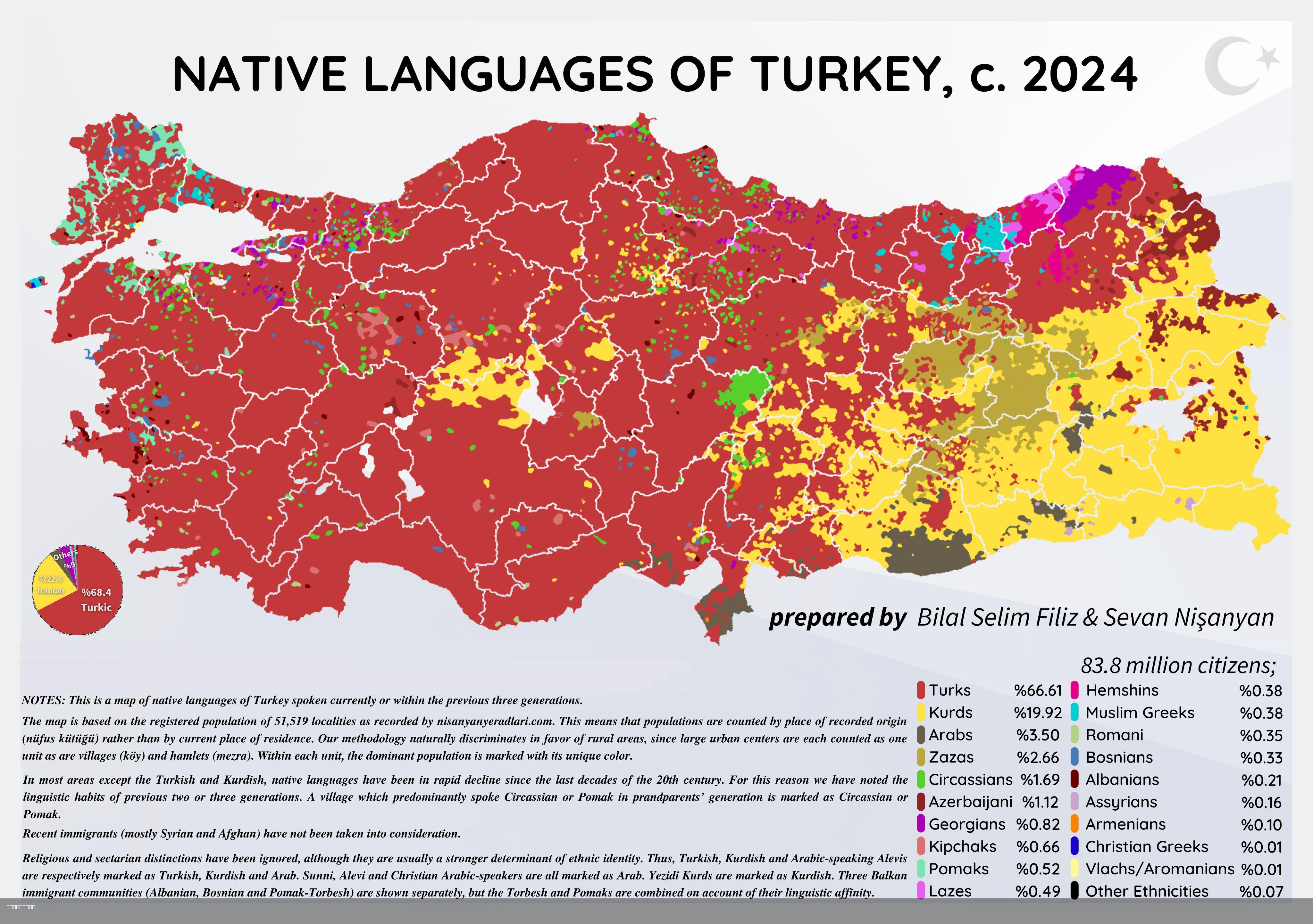Turkey Ethnic Map


Alex Cartwright
Senior Cartographer & GIS Specialist
Alex Cartwright is a renowned cartographer and geographic information systems specialist with over 15 years of experience in spatial analysis and data...
Geographic Analysis
What This Map Shows
The Turkey Ethnic Map provides a detailed visualization of the diverse ethnic groups that inhabit this unique transcontinental country. Located at the crossroads of Europe and Asia, Turkey's rich tapestry of cultures and ethnicities is reflected in its demographic distribution. This map highlights the various ethnic communities, such as Turks, Kurds, Armenians, Greeks, and others, allowing us to understand how these groups are spread across different regions of the country.
Deep Dive into Ethnic Diversity in Turkey
Turkey is home to a complex mosaic of ethnic identities, each contributing to the nation’s culture, language, and social fabric. The majority ethnic group is the Turks, who make up about 70-75% of the population. However, the significant presence of other ethnicities, primarily the Kurds, who account for approximately 15-20%, adds to the country’s diversity.
Interestingly, the Kurdish population primarily resides in the southeastern provinces, where they have maintained their distinct cultural practices and languages. They have a unique heritage that includes traditional music, dance, and cuisine, which differ markedly from Turkish customs.
Armenians and Greeks, although smaller in number today due to historical events, have also left a lasting imprint on Turkey’s cultural landscape, especially in urban centers like Istanbul. The Armenian community, for example, has a rich history that is evident in the architecture and churches that dot the city.
In addition to these groups, Turkey is also home to various smaller ethnic communities, including Arabs, Circassians, and Laz people. Each of these groups has its own language and cultural practices, contributing to the overall richness of Turkey's cultural identity.
The ethnic diversity is not just a matter of numbers; it also plays a critical role in the political landscape of Turkey. The Kurdish issue, for instance, has been a longstanding source of tension and conflict, influencing national policies and social dynamics. The government’s approach to ethnic minorities has varied over the years, fluctuating between attempts at assimilation and recognition of ethnic rights.
Regional Analysis
When examining the Turkey Ethnic Map closely, distinct regional patterns emerge. For instance, the eastern provinces, such as Diyarbakır and Van, show a high concentration of Kurdish communities. These areas are characterized by a strong sense of Kurdish nationalism, reflected in local governance and cultural expressions.
In contrast, western regions like Izmir and Aegean Coast cities have a higher population of Turks and a significant presence of other ethnicities, including Greeks and Jews. This diversity is particularly evident in urban areas where multicultural interactions shape everyday life.
Interestingly, Istanbul serves as a microcosm of Turkey’s ethnic diversity. As the largest city, it hosts a blend of all ethnic groups, which can be seen in the city’s neighborhoods, markets, and culinary offerings. Neighborhoods like Taksim and Kadıköy exhibit a vibrant mix of cultural influences, where Turkish, Kurdish, Armenian, and other cultures coexist.
Significance and Impact
Understanding the ethnic composition of Turkey is essential for grasping the complexities of its social and political landscape. The ethnic map not only highlights the demographic distribution but also serves as a reflection of Turkey’s historical narrative. The interplay between various ethnicities has shaped the country’s history, leading to both enriching cultural exchanges and significant conflicts.
In recent years, the recognition of ethnic rights and cultural identities has become a critical issue in Turkish politics. Initiatives aimed at promoting minority rights have sparked debates about national unity and identity. As Turkey continues to navigate its path in a rapidly changing world, the implications of its ethnic diversity will remain significant, influencing everything from social cohesion to economic development.
As we look to the future, questions arise: How will Turkey reconcile its diverse identities within a unified national framework? Will there be a trend towards greater autonomy and recognition for ethnic minorities? These are vital conversations that will shape the future of Turkey and its regional relationships.
In summary, the Turkey Ethnic Map not only serves as a geographical representation but also as a lens through which to understand the intricate social dynamics of this fascinating country. It invites us to delve deeper into the lives and histories of its people, reminding us that geography is much more than just maps—it’s about the stories that unfold within those boundaries.
Visualization Details
- Published
- August 3, 2025
- Views
- 178
Comments
Loading comments...